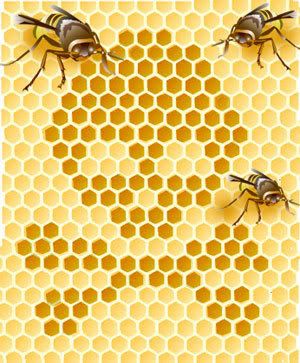The blast leveled more than 2,000 sq km of forest near the Tunguska River in Siberia on 30 June 1908.
A comet or asteroid is thought to have exploded in the Earth's atmosphere with a force equal to 1,000 Hiroshima bombs.
Now, a University of Bologna team says a lake near the epicentre of the blast may be occupying a crater hollowed out by a chunk of rock that hit the ground.

Lake Cheko - though shallow - fits the proportions of a small, bowl-shaped impact crater, say the Italy-based scientists.

Their investigation of the lake bottom's geology reveals a funnel-like shape not seen in neighbouring lakes.
In addition, a geophysics survey of the lake bed has turned up an unusual feature about 10m down which could either be compacted lake sediments or a buried fragment of space rock.
Other features suggest a recent origin for the lake.
Shocking rocks
Luca Gasparini, Giuseppe Longo and colleagues from Bologna argue that the lake feature, about 8km north-north-west of the airburst epicentre, may have been gouged out by remnant material that made it to the ground.
"We have no positive proof this is an impact crater, but we were able to exclude some other hypotheses, and this led us to our conclusion," Professor Longo, the research team leader, told BBC News.
The object that hurtled through the atmosphere on the morning of 30 June, 1908, is thought to have detonated some 5-10km above the ground with an energy equivalent to about 20 million tonnes of TNT. The explosion was so bright it even lit up the sky in London, UK.
Small fragments of the body should have survived the airburst and made it Earth. But, mysteriously, no crater - or even the slightest trace of the impactor - has ever been positively identified.
The impact cratering community does not accept structures as craters unless there is evidence of high temperatures and high pressures.
Gareth Collins, Imperial College London
"In my opinion, they certainly haven't provided any conclusive evidence it's an impact structure," commented Dr Gareth Collins, a Natural Environment Research Council (Nerc) research fellow at Imperial College London, UK.
He added: "The impact cratering community does not accept structures as craters unless there is evidence of high temperatures and high pressures. That requires evidence of rocks that have been melted or rocks that have been ground up by the impact."
Tree observation
Dr Collins pointed out that the Cheko feature was "anomalously" shallow and lacked the round shape of most craters - being more elliptical in its form. Elliptical craters only occur if the impactor's angle of entry is less than about 10 degrees.
"We know from modelling of the Tunguska event that the angle of entry must have been steeper than that," Dr Collins told BBC News.
A key feature of other impact craters is conspicuously missing from Lake Cheko - a "flap" around the crater rim of upside-down material tossed a short distance from the crater by the impact.
Dr Collins added that if pieces of the space rock had survived the airburst, they would have been too small and travelling too slowly to have generated a crater the size of Lake Cheko.
An impact would also have felled trees all around the crater, said the London geologist, yet there appeared to be trees older than 100 years still standing around Lake Cheko today.
Dr Benny Peiser, from Liverpool John Moores University, was also cautious about the findings, adding: "There has been an inflationary increase in the number of claims that allege discovery of impact events or impact craters."
Drill project
The Italian researchers argue that some of the lake's anomalous features could be explained if a space rock was travelling at a low speed and had a "soft" impact into the swampy Siberian taiga.
The crater could have become subsequently enlarged by the expulsion of water and gas from the ground.
The Bologna team says this could also account for the limited damage to the surrounding area and the absence of a rim of upturned ejecta.
"If formed during the impact, [the rim] would have been rapidly obliterated by collapse and gravity-failures during the subsequent degassing phase," the authors write in the journal Terra Nova.
Intriguingly, Lake Cheko does not appear on any maps before 1929, though the researchers admit the region was poorly charted before this time.
The University of Bologna team plans to mount another expedition to the Tunguska region in summer 2008.
The researchers aim to drill up to 10m below the lake bed to the anomaly picked up in the geophysics survey and determine whether it really is a piece of extraterrestrial rock.
Computer models carried out by other teams suggest that centimetre-sized fragments of the body could be found hundreds of kilometres away from Tunguska.
As the impactor plunged through the atmosphere, it pushed air out of its way, leaving a near-vacuum in its wake.
As it broke up, fragments would have expanded back up the vacuum and rained out over a much larger area."







